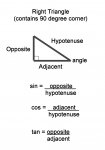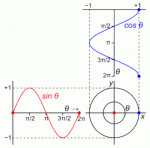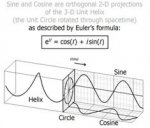anthonysolino
Senior Member
- Location
- Port St.Lucie Florida
Can any PE's chime in on how to apply the formula in relation to voltage drop for a different power factor, lets say a motor with a 30%PF I am attempting to do a calculation on a fire pump motor and I understand the K value should be replaced with the the correct power factor of the load being the table is based on .85% PF.
example
1.732x6.91(K-value PF%)X404A(locked rotor current)X150FT/Cmils
my question to you is how does the engineer come up with the K value based on the given power phase angle?
I was attempting to solve the R cos Theta+ X sin Theta
then it goes on to provide Z=R X PF+ X(L) sin[arccos (PF)]
essentially I am trying to solve Z=R X PF+ X(L) sin[arccos (PF)] I cant seem to understand what [arccos (PF)] values need to be based on the table.
example
1.732x6.91(K-value PF%)X404A(locked rotor current)X150FT/Cmils
my question to you is how does the engineer come up with the K value based on the given power phase angle?
I was attempting to solve the R cos Theta+ X sin Theta
then it goes on to provide Z=R X PF+ X(L) sin[arccos (PF)]
essentially I am trying to solve Z=R X PF+ X(L) sin[arccos (PF)] I cant seem to understand what [arccos (PF)] values need to be based on the table.
Last edited:



